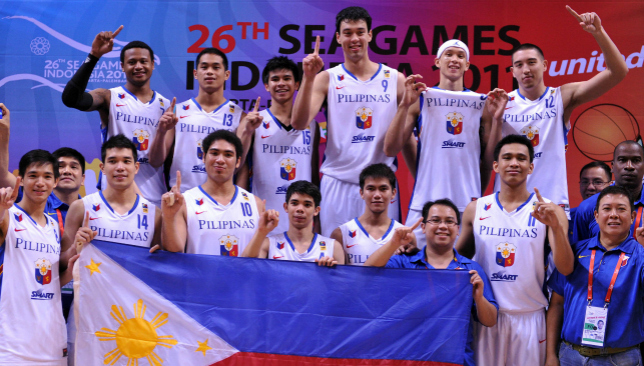
Basketball is more than just a game in the Philippines; it is a cultural phenomenon that unites people from all walks of life. The sport has become an integral part of Filipinos Love Basketball identity, reflecting the nation’s passion, resilience, and community spirit.
The Historical Roots of Filipinos Love Basketball Basketball in the Philippines
Basketball was introduced to the Philippines during the American colonial period in the early 1900s. American soldiers brought the sport to the islands, where it quickly gained popularity. The first recorded basketball game in the Philippines took place in 1900, and by 1901, the sport was included in the curriculum of schools.
Early Development and Growth
The establishment of the Philippine Amateur Athletic Federation in 1907 marked the formal organization of sports in the country, including basketball. The first official basketball league, the Manila Industrial and Commercial Athletic Association (MICAA), was founded in the 1930s, paving the way for more structured competitions.
The introduction of the Philippine Basketball Association (PBA) in 1975 further solidified basketball’s status as the nation’s favorite sport. As Asia’s first professional basketball league, the PBA showcased local talent and attracted a massive fan base. The league’s success inspired the formation of other basketball organizations and leagues across the country.
The Influence of International Competitions
Filipino basketball players have made their mark on the international stage, participating in various competitions such as the FIBA World Cup and the Southeast Asian Games. The national team, known as Gilas Pilipinas, has garnered attention for its spirited performances and has become a source of national pride. The success of players like Manny Pacquiao in promoting basketball and the rise of Filipino-American players in the NBA, such as Jordan Clarkson and Jalen Green, has further fueled interest in the sport.
The Cultural Significance of Basketball in Filipino Society
Basketball transcends mere entertainment in the Philippines; it is deeply embedded in the fabric of Filipino society. The sport serves as a platform for social interaction, community building, and even economic opportunities.
A Unifying Force
Basketball courts can be found in almost every neighborhood, serving as gathering places for friends, families, and communities. Whether it’s a casual game on a makeshift court or a competitive league match, basketball fosters camaraderie and teamwork. The sport brings together people of different backgrounds, promoting unity and friendship.
Economic Impact
The popularity of basketball has also led to various economic opportunities. From local tournaments to professional leagues, basketball generates revenue through sponsorships, merchandise sales, and ticket sales. Local businesses often thrive during basketball seasons, with many setting up food stalls and merchandise shops near courts and arenas.
Moreover, aspiring basketball players often pursue scholarships and professional careers, contributing to the economy and inspiring future generations. The sport has become a pathway for many young Filipinos to achieve their dreams, both locally and internationally.
Role Models and Inspiration
Filipino basketball players serve as role models for the youth, inspiring them to pursue their passions and stay active. The success stories of players who have risen from humble beginnings to achieve greatness resonate with many Filipinos. These athletes often engage in community outreach, promoting sportsmanship, discipline, and hard work.
The Current Landscape of Basketball in the Philippines
Today, basketball remains the most popular sport in the Philippines, with millions of fans passionately following local and international leagues. The PBA continues to thrive, while collegiate leagues like the UAAP and NCAA showcase young talent and foster rivalries.
Grassroots Development
Grassroots programs play a crucial role in nurturing young talent in the Philippines. Organizations and local government units invest in basketball clinics and training camps to develop skills at an early age. These initiatives aim to create a pipeline of talent for professional leagues and the national team.
The Rise of Digital Media
The advent of digital media has transformed how basketball is consumed in the Philippines. Social media platforms allow fans to connect with their favorite players, access live games, and engage in discussions. The rise of streaming services has made it easier for fans to watch both local and international games, further fueling the sport’s popularity.
Challenges and Opportunities
Despite its immense popularity, basketball in the Philippines faces challenges. Issues such as lack of infrastructure, limited funding for grassroots programs, and the need for better coaching and training facilities persist. However, these challenges also present opportunities for growth and development. Collaborations between the government, private sector, and sports organizations can help address these issues and promote a more sustainable basketball ecosystem.
Conclusion
Filipinos Love Basketball is more than just a sport in the Philippines; it is a reflection of the nation’s spirit, culture, and aspirations. From its historical roots to its current status as a beloved pastime, basketball has woven itself into the very fabric of Filipino society. As the sport continues to thrive, it holds the promise of uniting communities, inspiring future generations, and contributing to the nation’s identity.
The love for Filipinos Love Basketball in the Philippines is not just about the game; it is about the connections, dreams, and hopes that come with it.

Editor-In-Chief (sportstalk.ph)
Dan loves playing basketball and hiking.
He is a very sporty guy but still plays computer or console games at home.
He likes playing NBA 2k while listening to 90s music.
